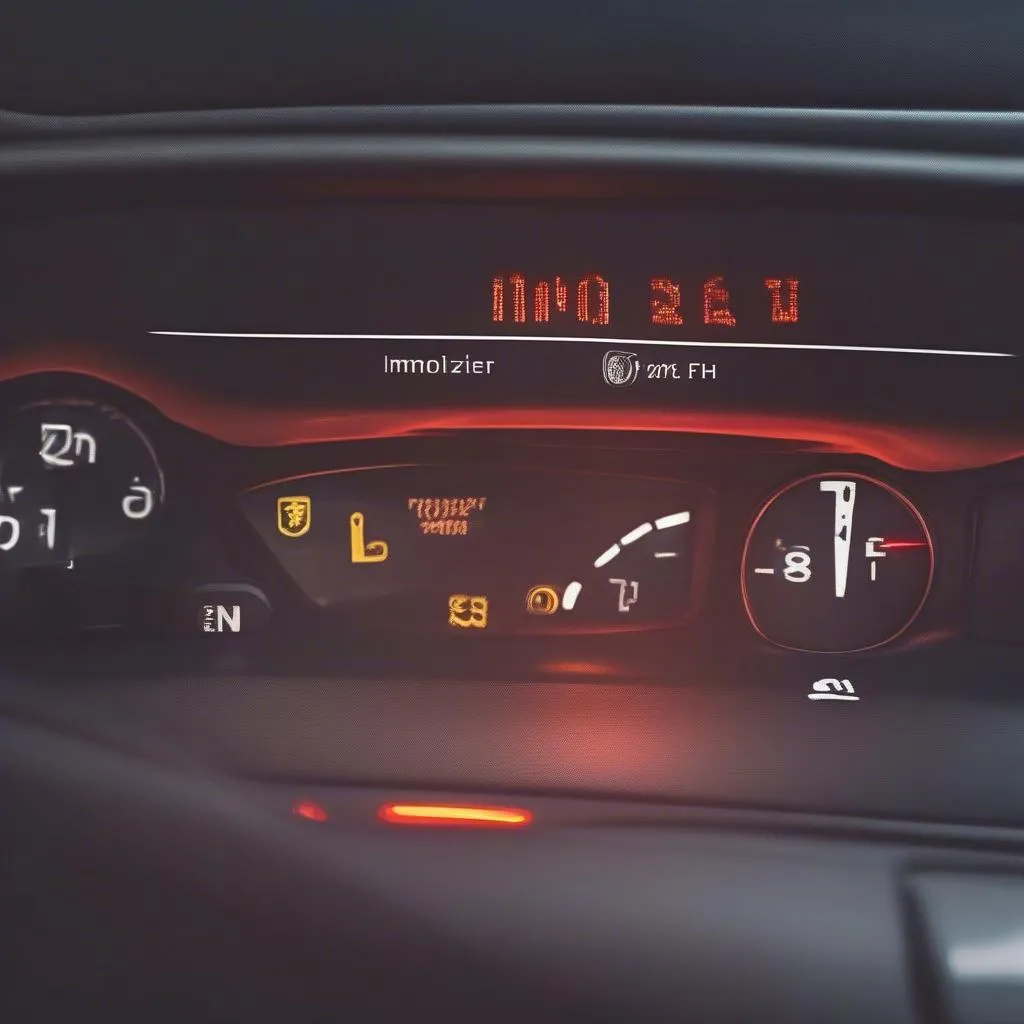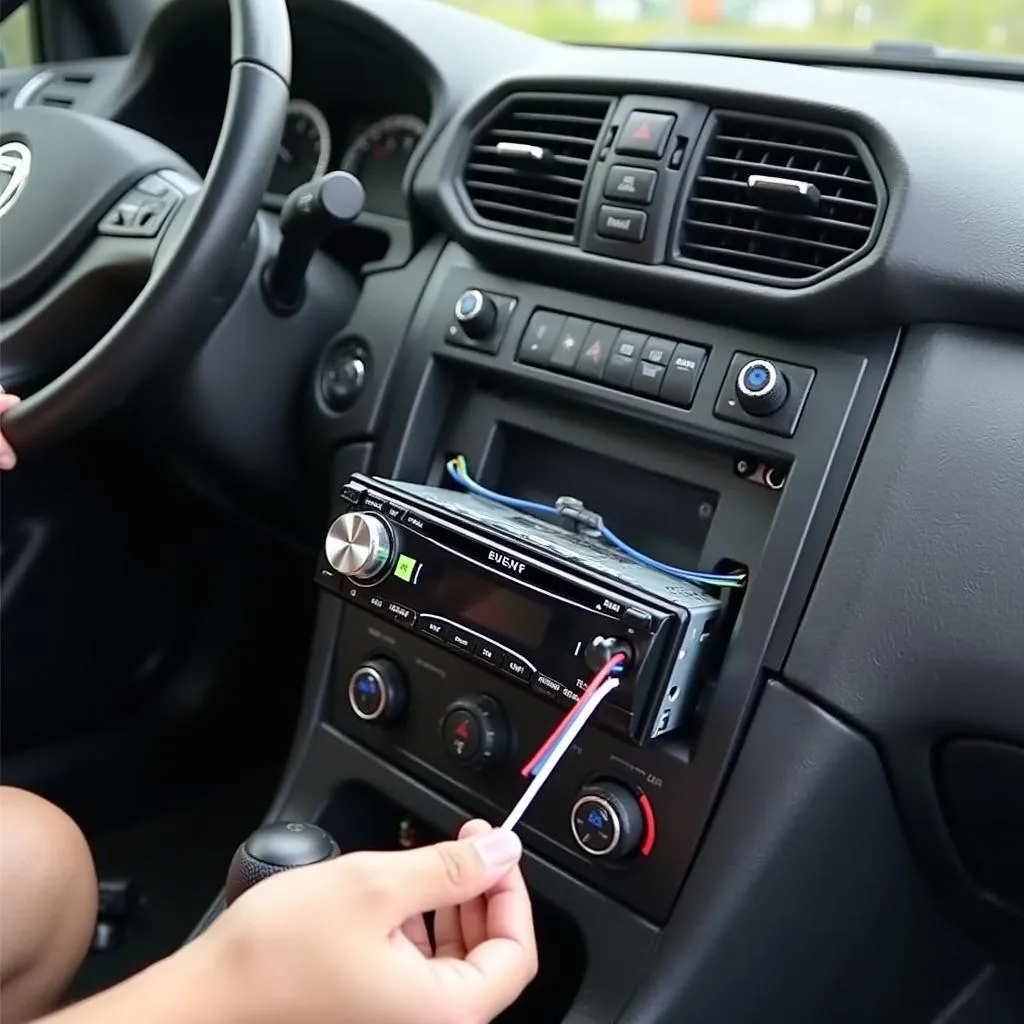Your Audi A6’s ESP and ABS warning lights illuminating can be a cause for concern. These systems play a crucial role in maintaining your vehicle’s stability and safety, and their malfunction can indicate a potential issue that needs attention. This article will delve into the common reasons behind these warning lights, the troubleshooting steps you can take, and potential solutions to get your car back on the road safely.
What Do the ESP and ABS Warning Lights Mean?
The Electronic Stability Program (ESP) and Anti-lock Braking System (ABS) are two advanced safety features that work together to enhance your Audi A6’s handling and braking performance.
-
ESP (Electronic Stability Program): This system monitors your car’s speed, steering angle, and wheel slip. In situations where the vehicle is about to lose control, ESP automatically applies brakes to individual wheels, reducing power to the engine, and steering the car back on track.
-
ABS (Anti-lock Braking System): This system prevents your wheels from locking up during hard braking, allowing you to maintain steering control and avoid skidding.
When the ESP and ABS warning lights come on, it signifies that there might be a fault within these systems, potentially affecting their functionality.
Common Causes of ESP and ABS Warning Lights in an Audi A6
Several factors can trigger the ESP and ABS warning lights in your Audi A6. Here are some of the most common causes:
1. Faulty Wheel Speed Sensors
The wheel speed sensors are crucial components of both the ESP and ABS systems. They measure the speed of each wheel, providing vital data for the systems to operate correctly.
Possible Problems:
- Damaged Sensor: The sensor itself might be damaged, causing inaccurate readings.
- Loose Wiring: Loose or damaged wiring connections to the sensor can disrupt the signal transmission.
- Contaminated Sensor: Dirt, debris, or brake fluid can contaminate the sensor, interfering with its function.
Troubleshooting:
- Check the Sensor’s Physical Condition: Visually inspect the sensors for any damage, loose wires, or debris.
- Clean the Sensor: Clean the sensor with a non-abrasive cleaner and a soft brush to remove any contaminants.
- Check the Wiring: Inspect the wiring for any damage, loose connections, or corrosion.
- Replace the Sensor: If the sensor is damaged or the wiring is faulty, it needs to be replaced.
2. Malfunctioning ABS Control Module
The ABS control module is the central processing unit for the ABS system. It receives input from the wheel speed sensors and activates the brake system to prevent wheel lockup.
Possible Problems:
- Internal Faults: The module itself might have internal faults or defects.
- Overheating: Excessive heat due to electrical problems or mechanical issues can damage the module.
- Corrosion: Moisture or corrosion in the module’s electrical connections can cause malfunctions.
Troubleshooting:
- Visual Inspection: Inspect the module for any signs of physical damage, overheating, or corrosion.
- Check Wiring Connections: Make sure the wiring connections to the module are clean and secure.
- Diagnostic Scan: Use an OBD-II scanner to read any error codes stored in the ABS control module, which can help pinpoint the issue.
- Replacement: If the module is faulty, it will need to be replaced.
3. Faulty ESP Control Module
Similar to the ABS control module, the ESP control module is the brain behind the ESP system. It receives data from various sensors, including wheel speed sensors, steering angle sensors, and yaw rate sensors, to determine the vehicle’s stability and apply necessary corrective actions.
Possible Problems:
- Internal Faults: The module itself might have internal malfunctions.
- Overheating: Similar to the ABS control module, excessive heat can damage the ESP control module.
- Electrical Problems: Faulty wiring or electrical connections can disrupt the module’s function.
Troubleshooting:
- Visual Inspection: Inspect the module for any signs of damage or overheating.
- Check Wiring Connections: Verify that the wiring connections are clean and secure.
- Diagnostic Scan: Use an OBD-II scanner to read error codes stored in the ESP control module.
- Replacement: If the module is faulty, it will require replacement.
4. Low Brake Fluid Level
The brake fluid level is essential for both the ABS and ESP systems to function correctly.
Possible Problems:
- Fluid Leak: A leak in the brake system can cause the fluid level to drop below the minimum threshold.
- Fluid Contamination: Brake fluid absorbs moisture over time, compromising its effectiveness.
Troubleshooting:
- Check Brake Fluid Level: Check the brake fluid reservoir level.
- Inspect for Leaks: Look for any signs of leaks in the brake lines, calipers, or master cylinder.
- Replace Fluid: If the fluid level is low or contaminated, top it off with fresh brake fluid or replace the entire fluid.
5. Faulty Brake System Components
Other components within the brake system can also contribute to the ESP and ABS warning lights, such as:
- Brake Calipers: Faulty brake calipers can cause uneven brake pad wear or wheel lockup, triggering the warning lights.
- Brake Pads: Worn-out brake pads can lead to wheel lockup during braking.
- Brake Rotors: Warped or damaged brake rotors can affect brake performance and trigger the warning lights.
Troubleshooting:
- Inspect Brake Components: Visually inspect the brake calipers, pads, and rotors for any signs of wear, damage, or corrosion.
- Replace Components: Replace worn-out or damaged components as needed.
What to Do When ESP and ABS Warning Lights Are On?
If your Audi A6’s ESP and ABS warning lights are on, here’s what you should do:
- Check for Obvious Issues: Begin by inspecting the brake fluid level, brake pads, and rotors for any visible problems.
- Drive Safely: Avoid aggressive braking or sudden maneuvers until you have diagnosed and addressed the issue.
- Use an OBD-II Scanner: A code reader can help you identify the specific error code related to the warning lights.
- Consult a Professional: If you are unable to diagnose the issue, or the problem persists after troubleshooting, it’s advisable to seek professional help from a qualified Audi mechanic.
Conclusion
The ESP and ABS warning lights in your Audi A6 should not be ignored. Addressing these issues promptly can prevent potential safety hazards and ensure your vehicle’s stability and braking performance remain optimal. While some troubleshooting steps can be performed independently, it’s recommended to consult a qualified Audi technician for a proper diagnosis and repair to ensure long-term safety and reliable operation of your car.


